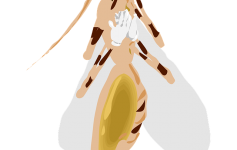If you’ve been following my blogs, you know I have a love for the little critters that line our inner tubes. I’m talking about the microbes that inhabit our insides and outnumber our own cells 10 to 1. Yup, we are officially “bug transport vehicles.” From my obsessive blogging and reading on this topic, I’ve compiled a list of some of the functions our microbiome has that confers such health benefits.
What Your Lil’ Buggers Can Do
Our microbiome does the following: the manufacturing of vitamins and amino acids, modulating the risk for cancer, pathogen inhibition, decreasing cardiovascular disease risk, positively influencing mood and behavior, assisting with detoxification, supporting our digestion, estrogen metabolism, regulating weight, modulating diabetes markers, supporting skin health, decreasing food sensitivities, impacting autism symptoms, decreasing the risk for fatty liver disease, modulating autoimmunity, and more. Amazing, right?
What Causes Bug-A-Boo-Boos & What Makes Them Happy?
There are various ways to negatively impact the population of bugs in our bodies, causing health to be hijacked. These include stressing out, eating an unhealthy diet, toxic exposures, lack of sleep, and certain medications, amongst other unhealthy behaviors.
This means that healthy behaviors can modulate our gut bugs positively. I wrote about these in a previous blog- exercise, diet, probiotics, decreasing stress…remember?
A Surprising Microbiome Relationship Hack
Recently, I ran into a really cool fact about our microbiome that may make one pause about their partners’ health habits. A study was done to assess the microbiota similarity that would result from intimate kissing in 21 couples. This “controlled kissing experiment” demonstrated clear correlations “of the salivary microbiota of couples and self-reported kiss frequencies, and the reported time passed after the latest kiss.” The researchers identified similar bacteria in kiss receivers, specifically the probiotic Lactobacillus and Bifidobacterium with a total bacterial transfer of 80 million bacteria per intimate kiss of 10 s!
What to Do With This Information?
If our microbiome is so important for health and kissing and contact can transfer critters, you may want to advise your partners that their behaviors are having an effect on your buggy friends. For example, I’ve seen some of my client get healthy but keep relapsing because they are kissing their partners who are gluten-eating and they are gluten sensitive. My thought was a cross-contamination of non-happy buggers. Yikes!
My solutions that seemed to clinically help, though I can’t back up with a randomized trial (which drives me wild, because you know I’m a research fanatic), was to have their partners take probiotics and to have them give the gift of a lovely probiotic toothpaste for him or her to brush with. This seemed to be a better option than having them stop kissing their mates, as this intamacy modulates immune response and helps us assess good fitting mates.
Now, get ready for the most interesting finding!!
The researchers reported, “Strikingly, 74% of the men reported higher intimate kiss frequencies than the women of the same couple, resulting in a male average of 10 and a female average of five intimate kisses per day (Additional file 3). This probably results from male over reporting, as previously noted in an analysis of self-reports on sexual behavior.”
It seems like even in self-reporting and controlled studies, “boys will still be boys.” But, is it their personality or their microbiome talking? We are just bug vehicles, remember?
A Note on Probiotics
I just wrote an article on the mechanism behind probiotics on my homepage. Some researchers think imbibing bugs aren’t a sure fire to help out your microbiome. True, diet is most important, but there is evidence that probiotics can support our belly bugs too! Read my blog here.
TuftsNow. The Microbiome. September 23, 2013.
Leon Chaitow, N.D., D.O. and Natasha Trenev. Probiotics. Thorsons Publishing Group, Northamptonshire England, c1990 ISBN 0-7225-1919-2 http://www.holisticmed.com/detox/dtx-probio.txt
Schwabe, RF, & Jobin, C. The microbiome and cancer. Nature Reviews Cancer.October 2013. 13; 800-812. doi:10.1038/nrc3610
Metagenomics: the role of the microbiome in cardiovascular diseases. Curr Opin Lipidol. 2006 Apr;17(2):157-61. http://www.ncbi.nlm.nih.gov/pubmed/16531752
Rochellys Diaz Heijtza,b,1, Shugui Wangc, Farhana Anuard, Yu Qiana,b, Britta Björkholmd, Annika Samuelssond, Martin L. Hibberdc, Hans Forssbergb,e, and Sven Petterssonc,d,1. Normal gut microbiota modulates brain development and behavior. PNAS. December 2011.
Cho KM, et al. Biodegradation of chlorpyrifos by lactic acid bacteria during kimchi fermentation. J Agric Food Chem. 2009 Mar 11;57(5):1882-9.
Probiotic Therapy for Irritable Bowel Syndrome. Gastroenterol Hepatol (N Y). Jan 2010; 6(1): 39-44. PMCID: PMC2886445
Fecal microbial determinants of fecal and systemic estrogens and estrogen metabolites: a cross-sectional study. J Transl Med. 2012; 10: 253. doi: 10.1186/1479-5876-10-253
Kallus & Brandt. The intestinal microbiota and obesity. J Clin Gastroenterol. 2012 Jan;46(1):16-24. doi: 10.1097/MCG.0b013e31823711fd.
Larsen N, et al. Gut microbiota in human adults with type 2 diabetes differs from non-diabetic adults (abstract). PLoS One. 2010 Feb 5;5(2):e9085.
Bowe WP, Logan AC. Acne vulgaris, probiotics and the gut-brain-skin axis – back to the futuMacIntyre DA, Chandiramani M, Lee YS, Kindinger L, Smith A, Angelopoulos N, Hehne B, et al. The vaginal microbiome during pregnancy and the postpartum period in a European population. Scientific Reports. March 11, 2015. doi:10.1038/srep08988
Paddock C. Infants’ gut bacteria linked to food sensitization. MNT. March 5, 2015. http://www.medicalnewstoday.com/articles/290377.php
Parracho HM, Bingham MO, Gibson GR, McCartney AL. Differences between the gut microflora of children with autistic spectrum disorders and that of healthy children. J Med Microbiol. 2005; 54(10):987-991.
Michail S1, Lin M2, Frey MR2, Fanter R3, Paliy O4, Hilbush B5, Reo NV4. Altered gut microbial energy and metabolism in children with non-alcoholic fatty liver disease. FEMS Microbiol Ecol. 2015 Feb;91(2):1-9. doi: 10.1093/femsec/fiu002. Epub 2014 Dec 5.
Steka, B. Multiple Sclerosis and the Microbiome: What’s the Connection? An Expert Interview With Sushrut Jangi, MD. Medscape Neurology. October 01, 2014. http://www.medscape.com/viewarticle/83238
Shaping the oral microbiota through intimate kissing. Microbiome 2014, 2:41 doi:10.1186/2049-2618-2-41
NIH. The Microbiome. March 2, 2015. http://www.niehs.nih.gov/research/supported/dert/programs/peph/podcasts/microbiome/index.cfm

